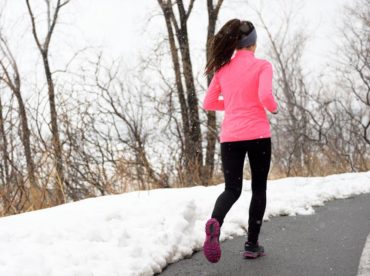 As the weather gets colder outside, do you debate heading out for that run or recreation? Are cold-weather workouts good for your health or should you avoid them? Women’s Health magazine claims that exercising out in the cold has health benefits over warm-weather workouts.
As the weather gets colder outside, do you debate heading out for that run or recreation? Are cold-weather workouts good for your health or should you avoid them? Women’s Health magazine claims that exercising out in the cold has health benefits over warm-weather workouts.
One argument is that cold weather makes you work harder, which burns more calories and releases more endorphins. The magazine also says that invigorating cold weather stimulates the senses, while heat and humidity drag you down. It also claims that race times are faster in cold weather — and faster runs burn more calories. The National Personal Training Institute agrees with these claims and adds the benefit of a stronger heart, lungs and circulatory system as well as a boost in vitamin D.
The research shows that we shouldn’t halt our winter exercise routine. In fact, we may be able to continue to exercise outdoors even in the winter. When doing so, however, some safety precautions should be taken.
First, always check with a doctor before starting an exercise routine. The Mayo Clinic also recommends that if you have asthma, heart problems or Raynaud’s disease, check with your doctor before exercising in the cold. Your doctor may provide special precautions related to your medication or condition.
How to stay safe while exercising in the cold winter months:
1. Dress appropriately.
- Cover your extremities — your fingers, nose and ears are the first to freeze. Keep them covered.
- Keep your clothes dry — damp clothes increase heat loss. Moisture-wicking clothing closest to your body will help to repel sweat. If necessary, wear a water-resistant cover over your clothes and change wet clothes promptly.
- Wear shoes with traction, especially in slush and ice.
- Don’t overdress. Exercise quickly increases body temperature. Wearing layers allows you to shed some articles of clothing once you warm up. Warming up indoors may eliminate the need to shed that first layer.
2. Drink water.
This may seem obvious, but sometimes individuals drink less when it is not hot out. You still need to hydrate, especially when exercising.
3. Be aware of daylight.
Winter months have less hours of sunlight. If working out in the dark, wear reflective clothing, find a well-lit area or bring your own lighting. It’s also safer to exercise with a buddy, especially after dark.
4. Know your weather.
Ice can be slippery and wind can penetrate clothing. If the morning weather is too unpredictable, you may want to move your workouts to your lunch hour, when conditions are usually milder.
5. Know the warning signs of frostbite, hypothermia and heart attack.
Extremely cold weather brings with it extra precautions. If you plan to exercise outdoors in very cold weather, study up on these warning signs.
- Frostbite — look for numbness, swelling or a change in color to your skin (typically gray or yellow). If these signs present themselves, submerge affected areas in room temperature water and seek help immediately.
- Hypothermia — when your body temperature drops below 98.6 degrees, you may have impaired motor skills and speech. If the symptoms progress, you may become weak with shallow breathing. Irrational behavior, dizziness and confusion may also result from this condition. Move to a warmer location and seek medical help.
- Heart attack — cold weather causes blood pressure to rise, increasing the potential of heart attacks, particularly for those with cardiovascular disease. Warning signs include pressure or pain in the chest, shortness of breath and cold sweat, as well as feeling faint or sick to the stomach. If you notice these warning signs, call 911.
Staying physically active is important all year round. If you need to find an indoor option for a few months, look for gyms that allow you to pay for single days, weeks or months without signing a yearly contract. However, if you are cleared to do so, follow these tips and enjoy the vigor of the cold. It just might motivate you to move more or run faster.























Comments